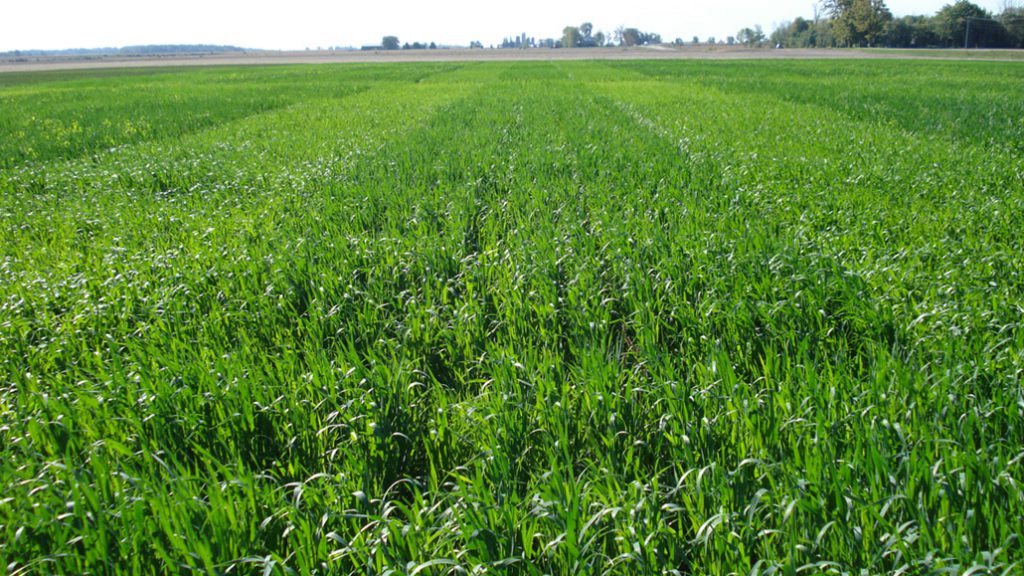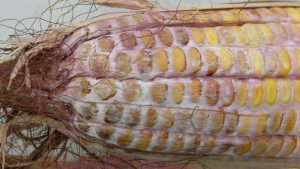Innovative cover crop approaches
BIO STRIP-TILL RESEARCH A FIRST IN ONTARIO

THE BENEFITS OFcover crops are widely known — keeping the soil covered to minimize soil erosion, improve water filtration and increase organic matter are just a few of the reasons that farmers will use cover crops as a management tool. But it can be challenging for farmers to know which cover crop and mixtures to plant, when to plant them, and how best to terminate them. A new research study led by Dr. Laura Van Eerd, professor of sustainable soil management at the Ridgetown Campus of the University of Guelph, is investigating many of these questions in a five-year study that will also look at an innovative approach to cover cropping: bio strip-tillage.
With plots in southern Ontario at Ridgetown, eastern Ontario at the Winchester Research Station and in northern Ontario at the New Liskeard Agricultural Research Station — planted in a 2-year rotation of winter wheat-cover crops and corn — one of the goals of the research project is to help farmers in different parts of the province determine which species, and mixtures, will work best for their climate and soil type and to have maximum impact on corn yield and their bottom line. This project is the first to look at cover crops with an Ontario-wide lens.
“Research has mostly been done in southern Ontario,” says Dr. Josh Nasielski, assistant professor at the University of Guelph, who manages the research plots in Winchester and New Liskeard. He says that while southern Ontario farmers have readily adopted cover crops, it’s still “novel in northern Ontario… where the cover crop is snow.”
“We’re asking what’s the best way to manage species selection, species mix and the impact on corn yield… and looking at the best termination and tillage methods.”
INNOVATIVE TRIALS
But for Van Eerd, the most exciting part of the project is the bio strips. The new approach to tillage — she says she knows of only a handful of growers doing it in Ontario — is an innovative way to use cover crops as an alternative to strip-till.
“The reason to strip-till is to have a really nice seed bed for the corn,” says Van Eerd. “The approach of bio strips is to use plants to create that nice seed bed for the corn… the way that is accomplished is by choosing cover crops that winter-kill and don’t leave a lot of residue, so by spring you have relatively bare soil.”
Radishes, says Van Eerd, meet the criteria, as does a four-species mixture of radishes, fava beans, buckwheat and oats.
Van Eerd says that there are pluses and minuses to that mixture, but it has been selected to meet the criteria of residue that breaks down quickly, and radish for the tilling aspect. The reason for including buckwheat is that it is a known soil conditioner.
“Ideally, these cover crops in the bio strip leave a really nice seed bed for corn,” says Van Eerd. “You just have to go in and plant corn.”
The potential benefits of bio strip-tillage are numerous, she says, and include reducing the number of passes and reducing soil erosion. “The same time you plant your cover crop after winter wheat, you’re also planting your bio strips. And because you’re not tilling, there is expected benefits of minimizing erosion, especially when planting on a slope, which is one of the riskier aspects of using strip-tillage.”
Van Eerd is also curious about how the bio strips will benefit the overall health of the soil and benefit the corn crop. “Does it stimulate microbial activity? Does it sequester carbon?”
MULTI-SPECIES MIXES
The single and multi-species bio strip trials will be evaluated against traditional no-till and strip-till plots planted with single, double and multi-species cover crop mixes. “We’ve approached it as single species, bi-culture and poly-culture. We’ve gone up to eight and 12 species mix,” says Van Eerd.
While a lot of research uses a single or double species mix, there has been recent research that explores the benefits of using a multi-species mix. How many species to add to the mix is the question, because, as Van Eerd points out, the benefits seem to plateau. “The question is where does it plateau? Is it four, six or 12 species to get those benefits from crop diversity?”
Van Eerd says that the cover crop options they are trialing won’t be for everyone. For many farmers, red clover inter-seeded into winter wheat works well and there is no need to change if it works in their system. “But for some growers, red clover isn’t working or they want to try something else.”
The challenge of trying something else is appealing to some growers, she says.
“For a lot of innovative and early-adopting growers, what I hear from them, is that cover cropping has made farming fun again. It’s seeing new things, thinking about new ways and new approaches, and that approach is challenging but it’s fun.”
This research project received funding from Grain Farmers of Ontario. •

























